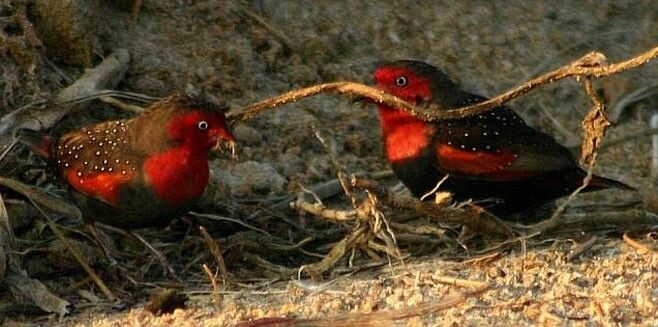When Can Chicks Go Outside: A Guide
You might not realize it, but chicks can start exploring the outdoors at just a few weeks old if you follow the right steps. It’s not as simple as opening the coop door, though. You’ll need to consider several factors, including weather, predators, and the setup of their new environment. By gradually increasing their outdoor time and monitoring their behavior, you can ensure they’re ready for this big transition. Curious about how to make this process smooth and safe for your young flock? Let’s explore the essential steps to prepare your chicks for their first outdoor adventure.
Ideal Age for Outdoor Time
To answer the question when can chicks go outside, they usually start exploring the outdoors when they’re around 4 to 6 weeks old, once their feathers are more developed and they can better regulate their body temperature. At this stage, it’s essential to provide supervised exploration to ensure their safety. You’ll want to watch for potential predators and any hazardous conditions that might harm your young birds. Supervision also allows you to intervene if they encounter any difficulties or threats.
Outdoor time offers invaluable socialization opportunities for your chicks. By interacting with other members of the flock and experiencing new environments, they learn essential social behaviors and pecking order dynamics. This period is crucial for their development and helps them become well-adjusted members of your flock.
Make sure the area where your chicks explore is secure and free from dangers such as toxic plants, sharp objects, or deep water sources. Gradually increase the duration of their outdoor time as they grow stronger and more confident. By providing a safe and enriching environment, you’ll help your chicks thrive and smoothly transition to spending more time outdoors as they mature.
Monitoring Weather Conditions
Monitoring weather conditions is crucial to ensure that your young birds aren’t exposed to extreme temperatures or adverse weather that could jeopardize their health and safety. Effective weather monitoring can make all the difference in providing a safe environment for your chicks during outdoor activities.
Always check the weather forecast before allowing your chicks outside. Avoid outdoor playtime if temperatures are below 55°F or above 85°F, as these extremes can be harmful.
Temperature control is also essential. Sudden drops in temperature can cause your chicks to become chilled, leading to illness. On the flip side, too much heat can result in overheating and dehydration. Keep a thermometer in the outdoor area to monitor real-time conditions.
Wind and precipitation are additional factors to consider. Strong winds can stress your chicks, making them susceptible to respiratory issues. Rain can cause your chicks to become wet and cold, increasing the risk of hypothermia.
Wait for calm and dry weather to ensure a safe and enjoyable experience for your birds. By diligently monitoring weather conditions, you’ll create a secure environment that allows your chicks to thrive during their outdoor playtime.
Outdoor Area Preparation
Preparing the outdoor area properly is essential to ensure your chicks’ safety and well-being when they venture outside. Start by focusing on an optimal coop design. Ensure the coop provides adequate ventilation but remains draft-free. Inside, incorporate roosting bars and nesting boxes to accommodate the chicks as they grow.
Landscaping the surrounding area is equally important. Create shaded spots to protect the chicks from direct sunlight and provide a mix of grass and dirt patches for natural foraging. Adding some low shrubs can offer additional cover and a sense of security for the young birds.
Predator proofing strategies are crucial. Install fencing that extends at least six inches underground to prevent burrowing predators. The fence should be tall enough to deter climbing animals and have a mesh small enough to keep out smaller threats. Consider adding a secure top covering to guard against aerial predators.
Inspect the area for any toxic plants or hazards that could harm the chicks. Remove these and ensure the ground is free of sharp objects or other dangerous materials.
With these preparations, your outdoor area will be a safe and welcoming environment for your chicks.
Gradual Acclimatization Process
After setting up a secure and comfortable outdoor environment, you should introduce your chicks to the outside world gradually to ensure they adapt smoothly. Start with a slow introduction by allowing them to spend a short amount of time outdoors each day. Initially, this can be as little as 10-15 minutes. This gentle exposure helps them acclimate without overwhelming them.
Each day, increase the outdoor time incrementally. Observe their behavior closely—if they seem stressed or cold, reduce the time and increase it more gradually. By the end of the first week, your chicks should comfortably handle an hour or more outside.
Ensure the weather conditions are favorable. Avoid exposing them to harsh winds, extreme temperatures, or inclement weather. Early morning or late afternoon tends to be the best time for these sessions.
Gradual acclimatization also involves getting your chicks used to the natural daylight cycle. This can be achieved by extending their outdoor time progressively until they spend most of their daytime hours outside.
Health and Safety Checks
Ensuring your chicks’ health and safety outdoors involves regular checks for any signs of illness, injury, or distress. Start by performing daily health checks. Look for symptoms such as lethargy, abnormal droppings, or changes in appetite. Examine their feathers and skin for parasites or wounds. Early detection of issues is crucial in preventing serious health problems.
Implementing safety measures is essential. Ensure your outdoor area is free from environmental hazards like sharp objects, toxic plants, and standing water, which can harbor bacteria or attract mosquitoes. Regularly inspect the area for any potential dangers that might compromise your chicks’ wellbeing.
Predator prevention is another critical aspect. While we’ll address specific predator strategies in the next section, initial steps include ensuring the enclosure is secure with no gaps or weak spots. Use sturdy materials that can withstand attempts by larger animals to breach the area.
Handling Predators and Pests
Guarding your chicks against predators and pests is vital to ensuring their safety and well-being outdoors. First, consider predator prevention by securing your coop and run. Reinforce all entry points with hardware cloth instead of chicken wire, as it’s tougher for predators like raccoons and foxes to breach. Installing a sturdy roof on the run will shield against aerial threats, such as hawks and owls.
Next, implement pest control measures. Keep the area around the coop clean and free from spilled feed, which attracts rodents and insects. Regularly inspect your surroundings for signs of burrowing or nesting, and set humane traps if necessary. Use diatomaceous earth or other safe, natural repellents to manage insect infestations.
Understanding outdoor dangers is crucial. Predators and pests can pose a constant threat, so employing effective protection methods is essential. Consider installing motion-activated lights or sprinklers to deter nocturnal predators. A secure coop door, ideally automated to close at dusk, adds another layer of protection.
Supervision and Interaction
Why is it important to supervise your chicks when they first start exploring the outdoors?
Playtime supervision ensures their safety and promotes socialization. Young chicks are vulnerable to predators, environmental hazards, and even getting lost. By watching over them, you can intervene quickly if any danger arises. Moreover, this close monitoring helps you identify and address any health issues early on.
Interactive learning and bonding opportunities abound when you supervise your chicks.
As they explore, they encounter new stimuli, which is crucial for their cognitive development. By engaging with them during this period, you help them adapt to their surroundings and learn essential survival skills. Your presence also reassures them, reducing stress and fostering a sense of security.
In addition, supervision during outdoor time strengthens your bond with your chicks.
Handling them gently and interacting with them regularly makes them more accustomed to human presence. This familiarity can make future care tasks, like health checks and vaccinations, much easier. By investing time in their early outdoor experiences, you’re not only keeping them safe but also nurturing a trusting relationship that will benefit both you and your chicks in the long run.
Conclusion
By carefully navigating the outdoor world like a captain steering a ship, you’ll ensure your chicks thrive when they venture outside. Remember, gradual acclimatization, diligent monitoring of weather, and proper safety measures are your compass.
With a structured and supervised approach, your chicks will benefit from the fresh air, natural behaviors, and socialization they need. Trust in your preparation, and watch as your chicks grow stronger and more resilient in their new environment.





